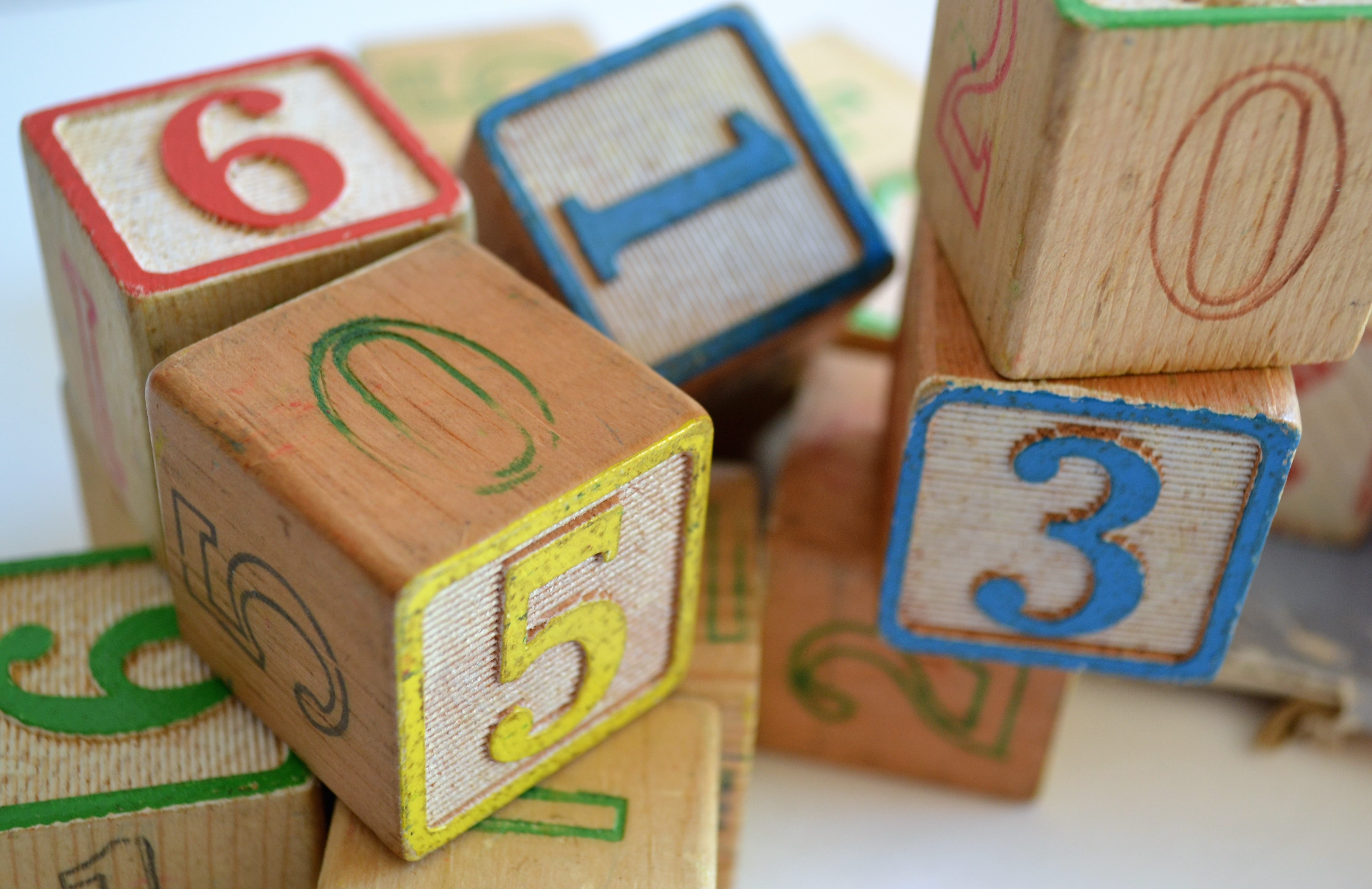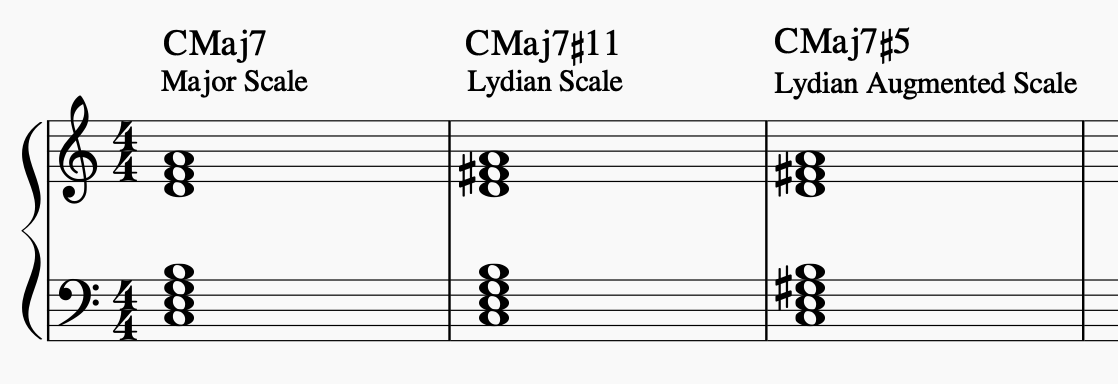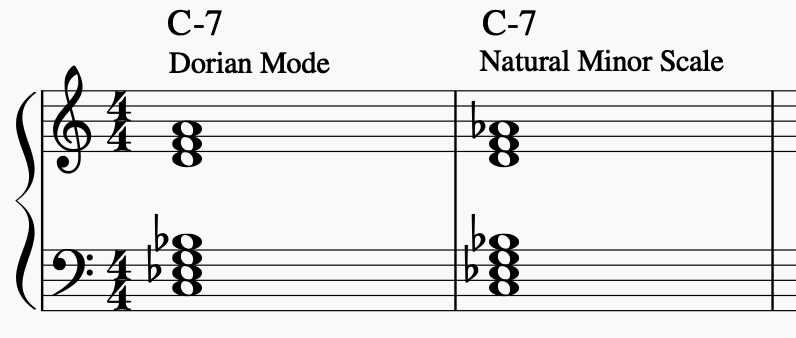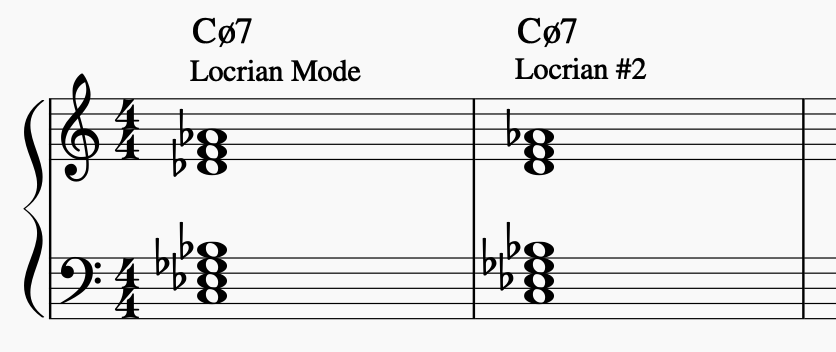The Pippinpotato Corner All things pippin and potato
Common Extensions and Alterations
4 minute read

Extensions and alterations are used to add color to jazz chords. When I first learned that jazz chords could have extensions up to the 13th and alterations on top of that, I felt a little overwhelmed by all the options. This post is a little cheatsheet of the common alterations for each type of jazz chord. What I realized is that the key to figuring out which alterations work for each chord is to remember that chords are scales and scales are chords. The scales that sound good over each chord dictate which alterations sound good for that particular chord.
Major 7
In addition to the regular major scale (also called the Ionian mode), the Lydian mode can be played over a major 7 chord. The Lydian mode is the mode derived from the 4th degree of the major scale, but you can just think of it as the major scale with a ♯11. The ♯11 is the most common alteration made to a major 7. Another common alteration is augmenting the fifth. The scale that this chord can be derived from is the Lydian Augmented scale, which is the Lydian scale with a ♯5. As a result, you can also sharp the 11 when you sharp the 5. It is actually preferable to play the ♯11 if you play the 11 at all with the major 7 chord. This is because the 11 clashes with the 3 as it is only a half step up.

Minor 7
The two most common scales played over minor 7 chords are the Dorian mode and the natural minor scale (also called the Aeolian mode). The Dorian mode doesn’t have any alterations, and the natural minor scale implies a ♭13. Which scale you should be thinking of should be determined from the context of the chord within the song. If the minor 7 comes before a dominant 7, you’re most likely thinking of a minor 7 over the Dorian mode. If the minor 7 comes at the end of a ii-V progression, then you’re most likely thinking of a minor 7 over the natural minor scale. I personally love the sound of a natural 11 over a minor 7 chord.

Half-Diminished 7
The two most common scales played over half-diminished 7 chords are the Locrian and Locrian ♯2 scales. The Locrian scale is the mode derived from the 7th degree of the major scale, and the Locrian ♯2 scale is derived from the 6th degree of the melodic minor scale. However, as the name suggests, it’s easier to think of the Locrian ♯2 scale as the Locrian scale with a ♯2.

Dominant 7
Dominant 7 chords are like little pockets of dissonance. There are many different scales you can use over dominant 7 chords, but one that I’m concerned with in particular is the altered scale.

The altered scale is built off the seventh degree of the melodic minor scale. As you can see, it basically alters every pretty note of the dominant 7 chord. You have a ♭2, ♯2, ♯11, ♭13.
As a result, you can basically make any alterations you’d like to dominant 7 chords. However, there are some alterations I use more than others. Here is a list of common alterations to dominant 7 chords.


It’s hard to tell by playing these chords on their own, but after trying them out in your jazz playing, you’ll eventually get a feel for which alterations you like more than others.
Final Note
Just as a disclaimer, the chords listed out on the music staffs in the article are just a graphic to show which are the available extensions and alterations for each chord; they aren’t actual chord voicings. Each extension and alteration gives its own special color to the chord, and by playing around with them more you can get a feel for which extensions and alterations you prefer.
Another important note is that you can look at the melody note to get an idea of what extensions/alterations to use. For example, if the chord is a C half-diminished 7 and the melody note is a D♮, you probably don’t want to use D♭ as an alteration.
Written on May 29th, 2020 by Chris Cheung